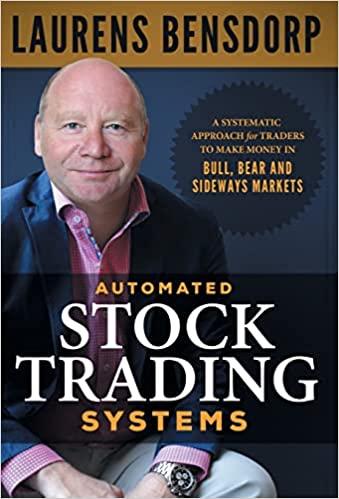Question
Santiago Old Car Parts is considering a new venture that hopes to take advantage of the opening of business investments in Cuba. Using proprietary software,
Santiago Old Car Parts is considering a new venture that hopes to take advantage of the opening of business investments in Cuba. Using proprietary software, CNC milling machines, and the latest technology in 3D printing, the firm can design and fabricate affordable car parts for old, classic cars that have no other sources of parts.
The market study has been completed and the interns have made the following forecasts for the project:
1) Initial investment
a) Santiago Old Car Parts has found a production site and will purchase the equipment to support the project. The equipment, including the shipping & installation, is expected to cost (t=0) $7,392,000
b) The investment in inventory needed for the project is expected to be $575,000 with an expected increase in Accounts Payable of $255,000.
c) The equipment falls into the IRS 5-year class life using the MACRS depreciation method with the 1/2 year convention. The IRS depreciation table is:
| Depreciation (% of depreciable basis) | Year |
| 20.00% | 1 |
| 32.00% | 2 |
| 19.20% | 3 |
| 11.52% | 4 |
| 11.52% | 5 |
| 5.76% | 6 |
The program is planned to continue for 9 years. At the end of the project, the equipment will be salvaged (sold). The forecasts predict that the equipment can be sold then for $283,000.
The net Operating Working Capital (Inventory and Accounts Payable) is expected to be liquidated at the end of the project (Year 9).
The project is expected to operate as a new division and the projection for new sales revenue is: Estimated sales in year 1: $1,750,000
- Sales are expected to grow by: 25% in year 2, 25% in year 3, 15% in years 4 & 5, 10% in year 6, and then 5% per year thereafter.
Production cost forecasts are: Fixed Cost: $200,000 per year. Annual variable costs: 45% of revenue
Santiago Old Car Parts has a marginal (federal + state) tax rate (T) of 34%. The firms beta is 1.41, the risk free rate of return (rrf) = 3.25%, The market risk premium (rm - rrf) = 4.25%, and the firm's analysts have partially prepared information for Santiago Old Car Parts cost of capital at various levels of debt & equity.
| D/E | D/A (Wd) | rd | rd(1-T) | b | E/A (Wce) | re | WACC |
| 0 | 0.000 | 0.00% | 0.00% | 1.18 | 1.000 | 8.25% | 8.252% |
| 0.30 | 0.231 | 4.77% | 3.15% | 1.41 | 0.769 | 9.24% | 7.836% |
| .50 | (blank) | 5.25% | 3.47% | (blank) | (blank) | 9.90% | 7.757% |
| (blank) | 0.429 | 6.75% | (blank) | 1.76 | 0.571 | (blank) | (blank) |
Where: rd = before tax cost of debt, rd(1-T) = after tax cost of debt, b = beta, re = cost of common equity, Wd = Weight of debt, Wce = Weight of common equity
Santiago Old Car Parts has the following levels of debt and common equity (market values): Debt = $250,000,000, Equity = $833,333,333 and Total Capital = 1,083,333,333.
Santiago Old Car Parts management utilizes the risk adjusted hurdle rates for evaluating capital budgeting projects. All potential projects are classified using a five level classification system:
| Risk Level | Class | Hurdle Rate |
| A | Low Risk | WACC - 2 |
| B | Below average Risk | WACC - 1 |
| C | Normal Risk | Equal to the WACC |
| D | Above average risk | WACC + 1 |
| E | High Risk | WACC + 2 |
The Cuba project is considered to be "High Risk"
Given all of the information provided in this case: (Show your work, calculations, and explain your answers well)
What is the firm's Weight Average Cost of Capital (WACC) at its current capital structure.
Capital Structure theory addresses finding a firm's optimal capital structure. How do you determine the optimal capital structure?
What is Santiago Old Car Part's optimal capital structure?
Define Hurdle rate. Based on Santiago Old Car Part's current capital structure, what is the appropriate Hurdle Rate for the Cuba project?
Please complete the capital budgeting analysis for this project. You should develop the incremental cash flows:
1) Initial Investment cash flow at t=0
2) Operating cash flows through the life of the project,
3) Terminal Cash Flows
You should evaluate the project using:
1) Net Present Value
2) Internal Rate of Return
3) Modified Internal Rate of Return
Present your decision whether the project should be accepted or rejected, and justify
Step by Step Solution
There are 3 Steps involved in it
Step: 1

Get Instant Access to Expert-Tailored Solutions
See step-by-step solutions with expert insights and AI powered tools for academic success
Step: 2

Step: 3

Ace Your Homework with AI
Get the answers you need in no time with our AI-driven, step-by-step assistance
Get Started


